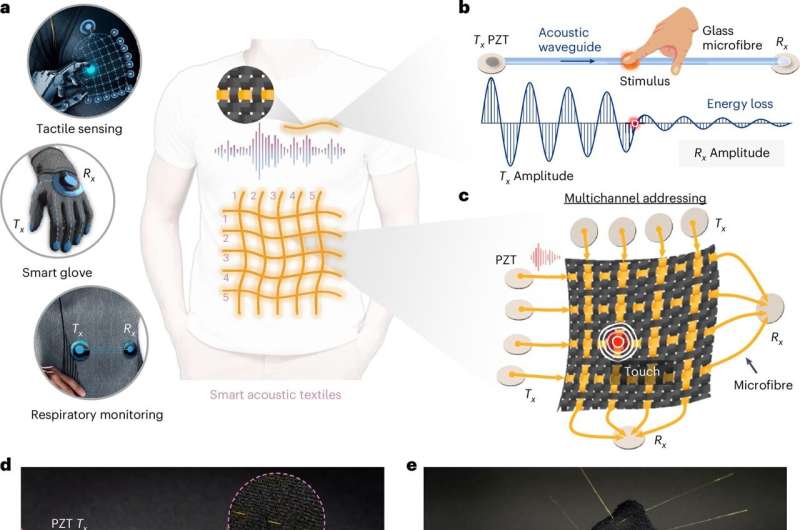Forget wearable tech with bulky electronics—ETH Zurich researchers have developed “SonoTextiles,” smart fabrics that use sound waves and glass fibers to detect movement, breathing, and even gestures.

ETH Zurich has introduced an innovation in smart textiles: SonoTextiles, a new fabric technology that uses sound waves instead of electronics to detect touch, pressure, and motion. Led by Professor Daniel Ahmed, Chair of Acoustic Robotics for Life Sciences and Healthcare, the team has demonstrated how glass fibers woven into regular fabric can turn clothing into precision sensors.
Unlike traditional smart garments that rely on complex electronics, SonoTextiles uses acoustic signals sent through glass fibers. Each fiber contains a tiny transmitter that emits ultrasonic waves—at frequencies around 100 kilohertz—and a receiver that detects any change in the signal. Movement, such as breathing or hand gestures, alters these signals, enabling precise, real-time tracking with minimal computing power.
Potential applications are wide-ranging. In healthcare, SonoTextiles could monitor patients’ breathing or posture, with real-time alerts for asthma attacks or pressure ulcers in wheelchair users. In sports, athletes could get instant feedback to improve form and prevent injury. The technology may also aid in communication, with gloves capable of translating sign language into text or speech. In augmented or virtual reality, it could provide enhanced interaction based on subtle body movements.
Despite promising lab results, the technology faces challenges for everyday use. Glass fibers are fragile and may break with frequent wear. However, the team is already exploring alternatives. “Metal fibers could be a viable substitute,” said Ahmed. “We’re now focusing on improving robustness and integrating the system seamlessly into clothing.” SonoTextiles mark a bold step toward the future of wearable technology—smarter, lighter, and more intuitive than ever.
“What sets our work apart is the use of different acoustic frequencies through glass fibers, which significantly reduces data overload,” said Yingqiang Wang, lead author of the study. The approach also offers practical benefits: the materials are inexpensive, washable, breathable, and energy-efficient.








